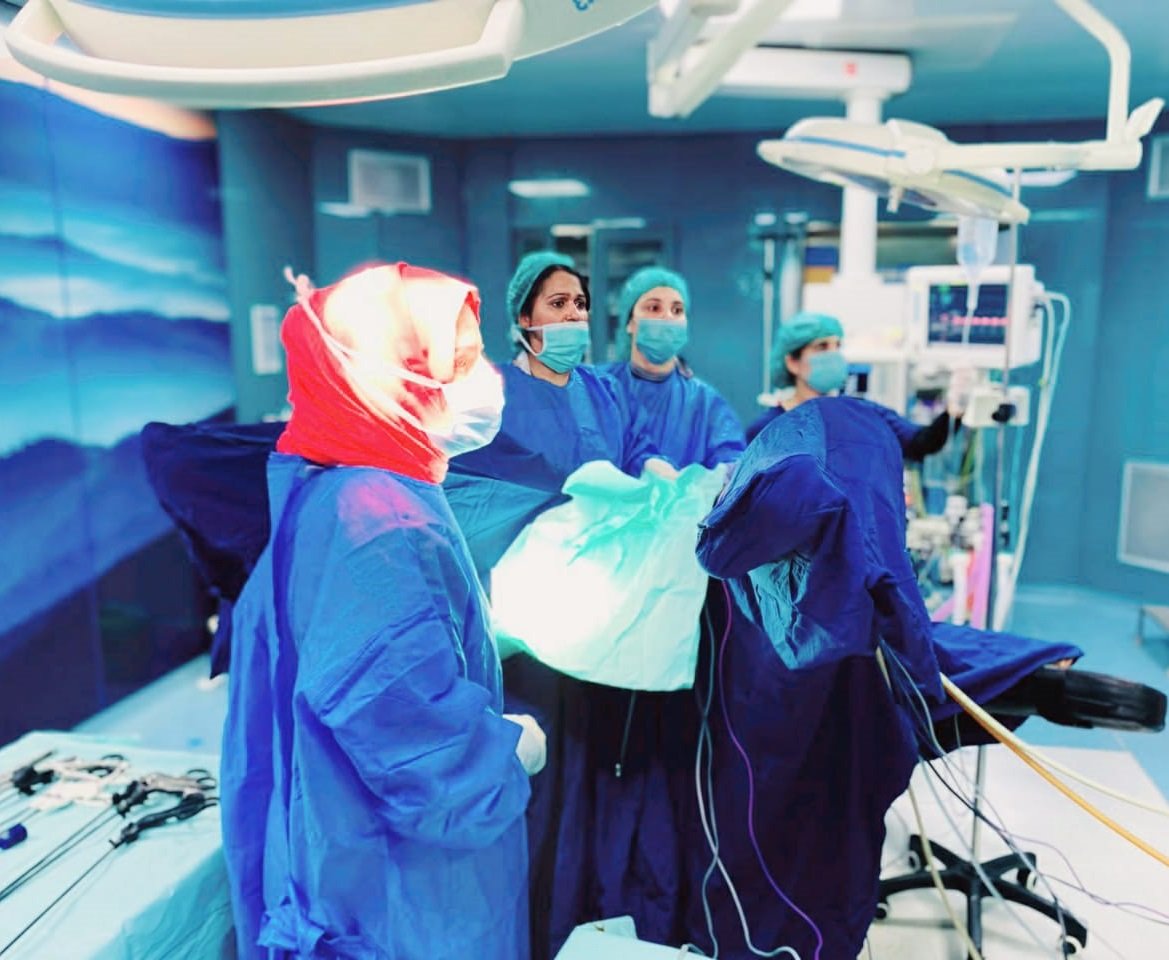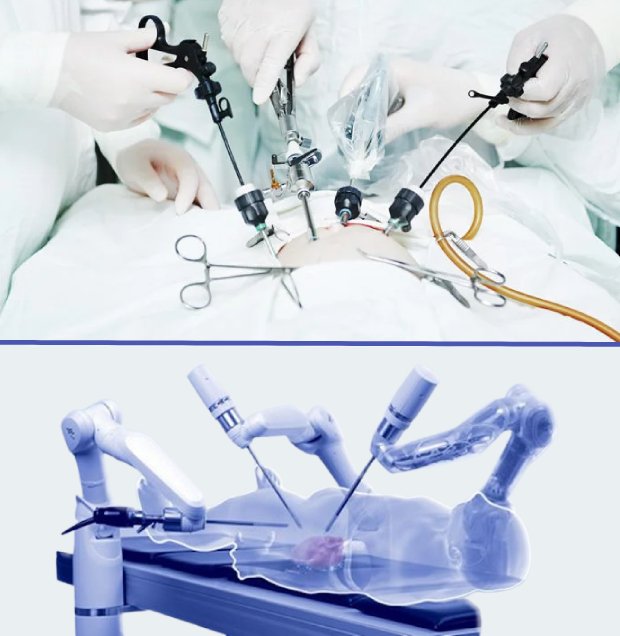Gallbladder Removal Surgery (CHOLECYSTECTOMY)
Home > General Treatments > Gallbladder Removal Surgery

The gallbladder, a small organ in your upper abdomen, collects and stores bile. Bile is a liquid that aids in food digestion. Gallstones are hard deposits that commonly form in the gallbladder and it can lead to health issues. If gallstones cause problems, doctors may recommend surgery for removal. This was traditionally done through open surgery, with a large incision in the belly. However, today, laparoscopic surgery, using tiny instruments and a laparoscope, has become the preferred approach. One can use Robot surgery as well for removal of Gallstones. These minimally invasive techniques involve only a few small incisions, leading to faster recovery, shorter hospital stay and much lower infection. Minimally invasive surgery in Lahore, employing small instruments, is a general term for such procedures. Your doctor will discuss the best option for your condition.
We have the best laparoscopic surgeon in Lahore dedicated to treating gallstones with utmost expertise and precision. Our highly skilled surgeon is at the forefront of minimally invasive techniques, providing patients with advanced and effective care. With a proven track record of successful gallstone removal, our surgical team is committed to delivering optimal outcomes and ensuring patient satisfaction in Lahore.
There are several risks factors that can increase the likelihood of developing gallbladder problems, including:
It's important to note that many people with gallstones or gallbladder issues may not experience any symptoms. However, when symptoms do occur, they often include abdominal pain, bloating, nausea, vomiting, and sometimes jaundice.
If you suspect you have gallbladder problems or experience persistent symptoms, it is essential to consult a Doctor for proper evaluation and diagnosis.

Gallbladder problems can manifest with a variety of symptoms, although some people may have gallstones or gallbladder issues without experiencing any noticeable symptoms. The most common symptoms of gallbladder problems include:
It's important to note that the severity and type of symptoms can vary depending on the specific gallbladder problem and its underlying cause. In some cases, individuals may experience mild discomfort, while others may have severe pain and complications.
If you experience any of these symptoms or suspect you have gallbladder problems, it is essential to seek medical attention for proper medical evaluation and diagnosis. Gallbladder issues, especially if left untreated, can lead to complications like infections, inflammation, or bile duct obstruction.
The diagnosis of gallbladder problems typically involves a combination of medical history review, physical examination, and various diagnostic tests. The aim is to determine the presence of gallstones, assess gallbladder function, and identify any related complications. Here are the common steps in diagnosing gallbladder problems:
Based on the results of these diagnostic tests, the Doctor can confirm the presence of gallbladder problems, determine the cause, and recommend appropriate treatment options. If gallstones or complications are detected, surgery (laparoscopic or robotic cholecystectomy) to remove the gallbladder is often the standard treatment. However, the approach may vary depending on the individual's condition and medical history. Always consult with a Doctor for a proper evaluation and diagnosis.
Minimal invasive surgery for the gallbladder is also known as laparoscopic or Robotic cholecystectomy. It is a specialized surgical procedure performed through small incisions in the abdomen using specialized instruments and a laparoscope (a thin, lighted tube with a camera). Here's how the surgery is typically done:
In laparoscopic cholecystectomy surgeon makes several small incisions (usually 3 to 4) in the abdomen. These incisions serve as entry points for the laparoscope and surgical instruments. Laparoscope is inserted through one of the incisions. The camera transmits real-time images of the internal organs to a monitor, allowing the surgeon to view the surgical site. Specialized surgical instruments are inserted through the other incisions. These instruments are used to manipulate and dissect the tissues surrounding the gallbladder. The surgeon carefully separates the gallbladder from the surrounding structures, such as the liver and bile ducts, using the laparoscopic instruments. Then surgeon carefully removes the gallstone or gallbladder as required.
Laparoscopic cholecystectomy is a less invasive approach compared to traditional open surgery. The benefits of this technique include reduced postoperative pain, faster recovery, shorter hospital stay, and minimal scarring.
In some cases, robotic-assisted laparoscopic cholecystectomy may be performed. In robotic surgery, the surgeon controls robotic arms equipped with surgical instruments and a camera, which offers enhanced precision and vision with 3D view. Robotic Surgery is most advance surgery technique in the world.
Your surgeon will determine the most suitable approach based on your medical history and the complexity of the surgery. Minimal invasive surgery is generally the preferred method for gallbladder removal, providing patients with a safe and effective treatment option for gallbladder problems.
Minimal invasive surgery, including laparoscopic and robotic techniques, offers several advantages over traditional open surgery for the treatment of gallstones and gallbladder-related issues. Here are some of the key benefits:
While minimal invasive surgery for gallstones and gallbladder problems offers many advantages. The choice of surgical approach depends on factors such as the patient's medical history, the severity of the condition. Always consult with a qualified surgeon to determine the most appropriate treatment option for your specific situation.
After undergoing a laparoscopic cholecystectomy (gallbladder removal surgery), most patients experience a smooth recovery without complications. However, it is essential to be aware of potential issues that may arise and to promptly contact a doctor if any of the following circumstances occur:
Please keep in mind that each person's recovery experience is unique, and not everyone will experience complications. However, it's always better to be cautious and communicate with your healthcare doctor if you have any concerns or notice any unusual symptoms after laparoscopic cholecystectomy.

We take pride in housing the best laparoscopic surgeon in Lahore, specialized in treating gallbladder conditions. With a wealth of experience and expertise, our laparoscopic surgeon in Lahore is at the forefront of minimally invasive techniques, ensuring superior outcomes and patient satisfaction. Our surgeon's precision and skill in laparoscopic procedures result in reduced postoperative discomfort and faster recovery times. Patients can trust in our commitment to compassionate care and individualized treatment plans, making us the top choice for gallbladder care in Lahore.
Contact UsCopyright @ . Design By Blizin Technologies